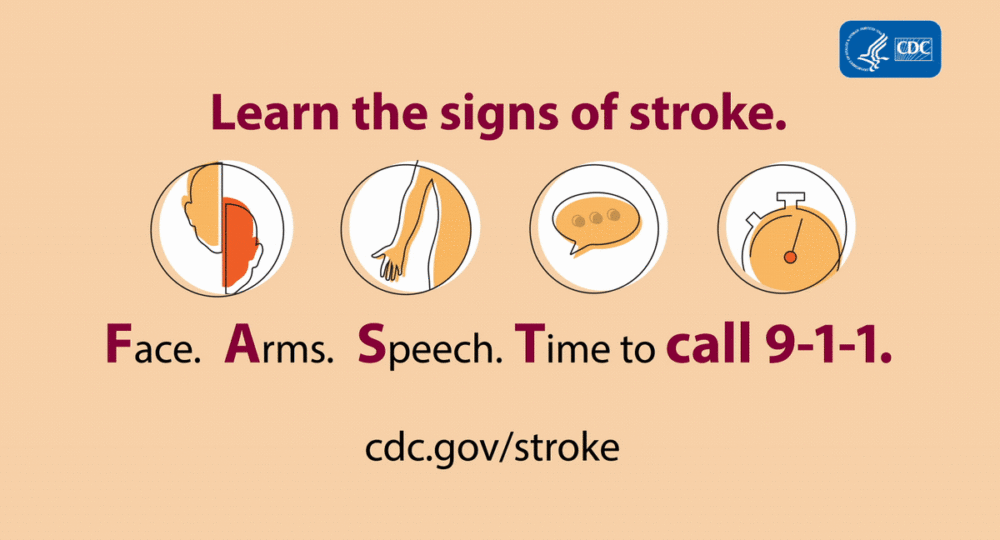During the month of May, we celebrated Stroke Awareness Month. This initiative brings forth vital information to help prevent and mitigate the devastation a stroke can cause. The American Stroke Association (ASA), the American Heart Association’s (AHA) Stroke Division, has coined the term “Time is Brain”, meaning the longer a stroke goes without treatment, the more damage is done in the brain. Recognizing the signs of and knowing what to do if you witness someone having a stroke can be the difference between a full recovery, devastating disability, or even survival.
In the United States, someone suffers a stroke every 40 seconds. According to the Centers for Disease Control and Prevention (CDC), more than 795,000 people in the U.S. experience a stroke every year, with stroke being the fifth leading cause of death and the leading cause of serious long-term disability among Americans. Strokes can happen anywhere, so your readiness to act is important to those around you. In one survey, 93% of respondents knew that sudden numbness on one side of the body was a warning sign of stroke, however, only 38% knew all of the major stroke symptoms or to immediately call 911 when someone was having a stroke.
During the onset of a stroke, time is of the essence. Individuals who arrive to the emergency room within 3 hours of symptom onset often have less disability 3 months after a stroke than those who received delayed care. The ASA reports that stroke patients who are treated with thrombolytics within 90 minutes of their first symptoms were almost 3 times more likely to recover with little or no disability. Understanding the stroke acronym F.A.S.T helps to ensure a stroke patient has the best chance at receiving treatment quickly and making a full recovery.
F.A.S.T. has been used by the National Stroke Association, AHA, and hospitals around the country to educate the public on detecting the signs of a stroke. It was first introduced in the United Kingdom in 1998. Use the letters of F.A.S.T. to spot F=Face Drooping, A=Arm Weakness, S=Speech Difficulty, and T=Time to call 911 as signs and action during a stroke emergency. If you witness someone experiencing these symptoms, call 911 immediately.
For the last 20 years, the AHA has been utilizing its Get With The Guidelines-Stroke registry to track trends in stroke care, such as the effectiveness of the F.A.S.T. initiative. This registry program promotes consistent adherence to the latest stroke treatment guidelines to achieve measurable improvements in stroke outcomes. For American Stroke Month 2023, the AHA has provided stroke-focused learning to those participating in the registry across the country, including Stroke Month Toolkits and webinars. To access these resources, click here. For information on how Registry Partners can serve as a resource to your stroke program, visit our website. To talk with one of our Registry Solutions Advisors click here.
Resources:
Learning F.A.S.T Can Save Lives
Get With The Guidelines Stroke
—
Graphic courtesy of CDC





